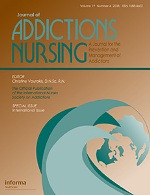Abstract:
An adolescent’s transition from experimental smoking (low-level cigarette smoking) to daily smoking (high-level cigarette smoking) is of great concern because if this happens, it is more difficult for teens to quit smoking and risk of premature death increases. Thus, understanding this phenomenon is critical. This study had 2 aims. One was to explore interrelationships among 4 problem behaviors (i.e., marijuana use, other illicit drug use, delinquency, and alcohol use) and underlying causes of the behaviors. The other was to examine the longitudinal effects of a composite of the 4 problem behaviors on the transition from experimental smoking to daily smoking in adolescence. This study analyzed secondary data from the National Longitudinal Study of Adolescent Health (N = 4,903 adolescent experimental smokers). The analytical approaches used were: (a) Pearson correlations to examine interrelationships among the 4 problem behaviors, (b) an exploratory factor analysis to examine their underlying nature and (c) a multinomial logistic regression to examine the influence of a composite of 4 problem behaviors (problem behavior index, PBI) on the transition from experimental to daily smoking. Strong positive relationships among the 4 problem behaviors were found, and the same underlying factor caused them. Also, the PBI successfully predicted the progression from experimental to daily smoking even after controlling for 21 influential factors. There are 3 implications for nursing professionals. First, the use of intervention strategies targeting multiple problem behaviors should be considered. Second, the problem behaviors should be used as a screening tool to identify teens at risk of progressing from experimental to daily smoking. Lastly, multifaceted and multidisciplinary approaches are needed to curb the progression to daily smoking.
Authors
- Sunhee Park
- Daniel Romer


